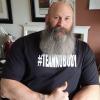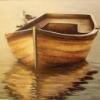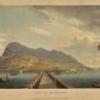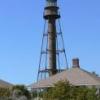-
Posts
233 -
Joined
-
Last visited
Reputation Activity
-
 Jack Panzeca got a reaction from tadheus in Oseberg Viking Ship by Jack P - FINISHED - Billing Boats - 1/25 Scale - 9th Century - (Modified)
Jack Panzeca got a reaction from tadheus in Oseberg Viking Ship by Jack P - FINISHED - Billing Boats - 1/25 Scale - 9th Century - (Modified)
I am back from a business trip (I know, I am supposed t be retired) and I stopped in Sedona Arizona for a few days to enjoy my other hobby, photography.
The bad news is that I fell off a rock and damaged my camera and myself. It is amazing how debilitating a disabled little finger is. It is improving rapidly so hopefully I can get back to my build in a few days. I am happy to be back and catching up on the true works of art underway on this wonderful forum.
-
 Jack Panzeca got a reaction from flying_dutchman2 in Oseberg Viking Ship by Jack P - FINISHED - Billing Boats - 1/25 Scale - 9th Century - (Modified)
Jack Panzeca got a reaction from flying_dutchman2 in Oseberg Viking Ship by Jack P - FINISHED - Billing Boats - 1/25 Scale - 9th Century - (Modified)
I am back from a business trip (I know, I am supposed t be retired) and I stopped in Sedona Arizona for a few days to enjoy my other hobby, photography.
The bad news is that I fell off a rock and damaged my camera and myself. It is amazing how debilitating a disabled little finger is. It is improving rapidly so hopefully I can get back to my build in a few days. I am happy to be back and catching up on the true works of art underway on this wonderful forum.
-
 Jack Panzeca got a reaction from maddog33 in Oseberg Viking Ship by Jack P - FINISHED - Billing Boats - 1/25 Scale - 9th Century - (Modified)
Jack Panzeca got a reaction from maddog33 in Oseberg Viking Ship by Jack P - FINISHED - Billing Boats - 1/25 Scale - 9th Century - (Modified)
After a day of indecision when I woke up this morning I realized I had to cut the new planks. I removed the plywood planks and used them as the pattern for the new oak planks. I used 1/6th inch thick red oak to cut out the pattern with a scroll saw. I cut them a little oversize since the originals did not fit as well as they should. After dry fitting I did a little final shaping with a 1 inch belt sander. Finished them off with a couple of passes through the thickness sander.
Making them a little wider really helped to place them a little higher and get them level without leaving a lot of bulkhead to cut off.
Hopefully they will tie in nicely with the oak deck planks.
-
 Jack Panzeca got a reaction from Bill Hime in Oseberg Viking Ship by Jack P - FINISHED - Billing Boats - 1/25 Scale - 9th Century - (Modified)
Jack Panzeca got a reaction from Bill Hime in Oseberg Viking Ship by Jack P - FINISHED - Billing Boats - 1/25 Scale - 9th Century - (Modified)
I added oak veneer to the keel and it flushed up nicely to the scrollwork. The first two pictures show what it looks like without and with. I plan to cover the exposed plywood ends with oak and plank the deck as well with oak.
The gunwales or sheer strakes (or whatever the Viking equivalent is) are not the best kit pieces and you can see in the third picture they look sort of unexciting. They will have shields on the upper plank so most of it will be covered.
I clamped a couple of scrap pieces of oak to the ship to get an idea of how it will look.
I have enough oak on hand to do both sides I am just not sure if it is worth the time and effort. Also not sure if it will make the rest of the hull planks look weak. Stain tests with the oak and plywood might help me make up my mind. Advice is very welcome.
-
 Jack Panzeca got a reaction from Bill Hime in Oseberg Viking Ship by Jack P - FINISHED - Billing Boats - 1/25 Scale - 9th Century - (Modified)
Jack Panzeca got a reaction from Bill Hime in Oseberg Viking Ship by Jack P - FINISHED - Billing Boats - 1/25 Scale - 9th Century - (Modified)
After a day of indecision when I woke up this morning I realized I had to cut the new planks. I removed the plywood planks and used them as the pattern for the new oak planks. I used 1/6th inch thick red oak to cut out the pattern with a scroll saw. I cut them a little oversize since the originals did not fit as well as they should. After dry fitting I did a little final shaping with a 1 inch belt sander. Finished them off with a couple of passes through the thickness sander.
Making them a little wider really helped to place them a little higher and get them level without leaving a lot of bulkhead to cut off.
Hopefully they will tie in nicely with the oak deck planks.
-
 Jack Panzeca got a reaction from Dee_Dee in Oseberg Viking Ship by Jack P - FINISHED - Billing Boats - 1/25 Scale - 9th Century - (Modified)
Jack Panzeca got a reaction from Dee_Dee in Oseberg Viking Ship by Jack P - FINISHED - Billing Boats - 1/25 Scale - 9th Century - (Modified)
I added oak veneer to the keel and it flushed up nicely to the scrollwork. The first two pictures show what it looks like without and with. I plan to cover the exposed plywood ends with oak and plank the deck as well with oak.
The gunwales or sheer strakes (or whatever the Viking equivalent is) are not the best kit pieces and you can see in the third picture they look sort of unexciting. They will have shields on the upper plank so most of it will be covered.
I clamped a couple of scrap pieces of oak to the ship to get an idea of how it will look.
I have enough oak on hand to do both sides I am just not sure if it is worth the time and effort. Also not sure if it will make the rest of the hull planks look weak. Stain tests with the oak and plywood might help me make up my mind. Advice is very welcome.
-
 Jack Panzeca got a reaction from Bill Hime in Oseberg Viking Ship by Jack P - FINISHED - Billing Boats - 1/25 Scale - 9th Century - (Modified)
Jack Panzeca got a reaction from Bill Hime in Oseberg Viking Ship by Jack P - FINISHED - Billing Boats - 1/25 Scale - 9th Century - (Modified)
I had to cut back the planks in the curve to allow the scrollwork to fit. Better that than reduce the size of the scroll which is the most important visual detail.
Von_Kossa and I both ran into the same problem with the top two planks that form a vertical band. If you follow the bulkheads those planks lift to the center. They are also a little fat on the ends. They must be dragged down to get them level which leaves a fair amount of bulkhead to be cut off. The bulkheads are also cut with the profile for those two planks too deep. It takes a lot of sanding to cut them back far enough that the planks lay against each other. It is still a little high (I missed it) which I will have to cut back. I am holding off on the scroll pieces on the inside of the stem and stern to avoid damage as I work.
This sure is fun!
-
 Jack Panzeca got a reaction from Bindy in Oseberg Viking Ship by Jack P - FINISHED - Billing Boats - 1/25 Scale - 9th Century - (Modified)
Jack Panzeca got a reaction from Bindy in Oseberg Viking Ship by Jack P - FINISHED - Billing Boats - 1/25 Scale - 9th Century - (Modified)
Hi Senior ole salt. Those guys were tough. True explorers that knew how to survive.
Thanks Bindy, The new planks look even better in real life than in the photograph. I was amazed that I managed to get the cut correct the first time. Practice I guess. More to come as soon as I return.
-
 Jack Panzeca got a reaction from CaptainSteve in Oseberg Viking Ship by Jack P - FINISHED - Billing Boats - 1/25 Scale - 9th Century - (Modified)
Jack Panzeca got a reaction from CaptainSteve in Oseberg Viking Ship by Jack P - FINISHED - Billing Boats - 1/25 Scale - 9th Century - (Modified)
I added oak veneer to the keel and it flushed up nicely to the scrollwork. The first two pictures show what it looks like without and with. I plan to cover the exposed plywood ends with oak and plank the deck as well with oak.
The gunwales or sheer strakes (or whatever the Viking equivalent is) are not the best kit pieces and you can see in the third picture they look sort of unexciting. They will have shields on the upper plank so most of it will be covered.
I clamped a couple of scrap pieces of oak to the ship to get an idea of how it will look.
I have enough oak on hand to do both sides I am just not sure if it is worth the time and effort. Also not sure if it will make the rest of the hull planks look weak. Stain tests with the oak and plywood might help me make up my mind. Advice is very welcome.
-
 Jack Panzeca got a reaction from ofencer29350 in Oseberg Viking Ship by Jack P - FINISHED - Billing Boats - 1/25 Scale - 9th Century - (Modified)
Jack Panzeca got a reaction from ofencer29350 in Oseberg Viking Ship by Jack P - FINISHED - Billing Boats - 1/25 Scale - 9th Century - (Modified)
After a day of indecision when I woke up this morning I realized I had to cut the new planks. I removed the plywood planks and used them as the pattern for the new oak planks. I used 1/6th inch thick red oak to cut out the pattern with a scroll saw. I cut them a little oversize since the originals did not fit as well as they should. After dry fitting I did a little final shaping with a 1 inch belt sander. Finished them off with a couple of passes through the thickness sander.
Making them a little wider really helped to place them a little higher and get them level without leaving a lot of bulkhead to cut off.
Hopefully they will tie in nicely with the oak deck planks.
-
 Jack Panzeca got a reaction from Aussie048 in Oseberg Viking Ship by Jack P - FINISHED - Billing Boats - 1/25 Scale - 9th Century - (Modified)
Jack Panzeca got a reaction from Aussie048 in Oseberg Viking Ship by Jack P - FINISHED - Billing Boats - 1/25 Scale - 9th Century - (Modified)
After a day of indecision when I woke up this morning I realized I had to cut the new planks. I removed the plywood planks and used them as the pattern for the new oak planks. I used 1/6th inch thick red oak to cut out the pattern with a scroll saw. I cut them a little oversize since the originals did not fit as well as they should. After dry fitting I did a little final shaping with a 1 inch belt sander. Finished them off with a couple of passes through the thickness sander.
Making them a little wider really helped to place them a little higher and get them level without leaving a lot of bulkhead to cut off.
Hopefully they will tie in nicely with the oak deck planks.
-
 Jack Panzeca got a reaction from Aussie048 in Oseberg Viking Ship by Jack P - FINISHED - Billing Boats - 1/25 Scale - 9th Century - (Modified)
Jack Panzeca got a reaction from Aussie048 in Oseberg Viking Ship by Jack P - FINISHED - Billing Boats - 1/25 Scale - 9th Century - (Modified)
I added oak veneer to the keel and it flushed up nicely to the scrollwork. The first two pictures show what it looks like without and with. I plan to cover the exposed plywood ends with oak and plank the deck as well with oak.
The gunwales or sheer strakes (or whatever the Viking equivalent is) are not the best kit pieces and you can see in the third picture they look sort of unexciting. They will have shields on the upper plank so most of it will be covered.
I clamped a couple of scrap pieces of oak to the ship to get an idea of how it will look.
I have enough oak on hand to do both sides I am just not sure if it is worth the time and effort. Also not sure if it will make the rest of the hull planks look weak. Stain tests with the oak and plywood might help me make up my mind. Advice is very welcome.
-
 Jack Panzeca got a reaction from flying_dutchman2 in Oseberg Viking Ship by Jack P - FINISHED - Billing Boats - 1/25 Scale - 9th Century - (Modified)
Jack Panzeca got a reaction from flying_dutchman2 in Oseberg Viking Ship by Jack P - FINISHED - Billing Boats - 1/25 Scale - 9th Century - (Modified)
I had to cut back the planks in the curve to allow the scrollwork to fit. Better that than reduce the size of the scroll which is the most important visual detail.
Von_Kossa and I both ran into the same problem with the top two planks that form a vertical band. If you follow the bulkheads those planks lift to the center. They are also a little fat on the ends. They must be dragged down to get them level which leaves a fair amount of bulkhead to be cut off. The bulkheads are also cut with the profile for those two planks too deep. It takes a lot of sanding to cut them back far enough that the planks lay against each other. It is still a little high (I missed it) which I will have to cut back. I am holding off on the scroll pieces on the inside of the stem and stern to avoid damage as I work.
This sure is fun!
-
 Jack Panzeca got a reaction from klimi in Oseberg Viking Ship by Jack P - FINISHED - Billing Boats - 1/25 Scale - 9th Century - (Modified)
Jack Panzeca got a reaction from klimi in Oseberg Viking Ship by Jack P - FINISHED - Billing Boats - 1/25 Scale - 9th Century - (Modified)
I had to cut back the planks in the curve to allow the scrollwork to fit. Better that than reduce the size of the scroll which is the most important visual detail.
Von_Kossa and I both ran into the same problem with the top two planks that form a vertical band. If you follow the bulkheads those planks lift to the center. They are also a little fat on the ends. They must be dragged down to get them level which leaves a fair amount of bulkhead to be cut off. The bulkheads are also cut with the profile for those two planks too deep. It takes a lot of sanding to cut them back far enough that the planks lay against each other. It is still a little high (I missed it) which I will have to cut back. I am holding off on the scroll pieces on the inside of the stem and stern to avoid damage as I work.
This sure is fun!
-
 Jack Panzeca got a reaction from rvchima in Oseberg Viking Ship by Jack P - FINISHED - Billing Boats - 1/25 Scale - 9th Century - (Modified)
Jack Panzeca got a reaction from rvchima in Oseberg Viking Ship by Jack P - FINISHED - Billing Boats - 1/25 Scale - 9th Century - (Modified)
I stripped off the back layer of the inside piece of scrollwork with a scalpel blade so that it would lay flat with the rest of the scrollwork.
There is a spacer at the top of the scrollwork where it pinches together. It is sanded down and glued to the top of the structure. There is also a small spacer needed where the scrollwork meets.
Another small piece cut to fit at the bottom of the scroll. Also, a full hull length spacer at the top of the hull planking to give the last two vertical planks a place to land. Obechi was specified but it would not take the bend without cracking so I used basswood. I soaked it and bent it with a curling iron.
Added the last two vertical planks.
-
 Jack Panzeca got a reaction from kapiteinhadock in Oseberg Viking Ship by Jack P - FINISHED - Billing Boats - 1/25 Scale - 9th Century - (Modified)
Jack Panzeca got a reaction from kapiteinhadock in Oseberg Viking Ship by Jack P - FINISHED - Billing Boats - 1/25 Scale - 9th Century - (Modified)
I had to cut back the planks in the curve to allow the scrollwork to fit. Better that than reduce the size of the scroll which is the most important visual detail.
Von_Kossa and I both ran into the same problem with the top two planks that form a vertical band. If you follow the bulkheads those planks lift to the center. They are also a little fat on the ends. They must be dragged down to get them level which leaves a fair amount of bulkhead to be cut off. The bulkheads are also cut with the profile for those two planks too deep. It takes a lot of sanding to cut them back far enough that the planks lay against each other. It is still a little high (I missed it) which I will have to cut back. I am holding off on the scroll pieces on the inside of the stem and stern to avoid damage as I work.
This sure is fun!
-
 Jack Panzeca got a reaction from Aussie048 in Oseberg Viking Ship by Jack P - FINISHED - Billing Boats - 1/25 Scale - 9th Century - (Modified)
Jack Panzeca got a reaction from Aussie048 in Oseberg Viking Ship by Jack P - FINISHED - Billing Boats - 1/25 Scale - 9th Century - (Modified)
I had to cut back the planks in the curve to allow the scrollwork to fit. Better that than reduce the size of the scroll which is the most important visual detail.
Von_Kossa and I both ran into the same problem with the top two planks that form a vertical band. If you follow the bulkheads those planks lift to the center. They are also a little fat on the ends. They must be dragged down to get them level which leaves a fair amount of bulkhead to be cut off. The bulkheads are also cut with the profile for those two planks too deep. It takes a lot of sanding to cut them back far enough that the planks lay against each other. It is still a little high (I missed it) which I will have to cut back. I am holding off on the scroll pieces on the inside of the stem and stern to avoid damage as I work.
This sure is fun!
-
 Jack Panzeca got a reaction from jbford in Oseberg Viking Ship by Jack P - FINISHED - Billing Boats - 1/25 Scale - 9th Century - (Modified)
Jack Panzeca got a reaction from jbford in Oseberg Viking Ship by Jack P - FINISHED - Billing Boats - 1/25 Scale - 9th Century - (Modified)
I had to cut back the planks in the curve to allow the scrollwork to fit. Better that than reduce the size of the scroll which is the most important visual detail.
Von_Kossa and I both ran into the same problem with the top two planks that form a vertical band. If you follow the bulkheads those planks lift to the center. They are also a little fat on the ends. They must be dragged down to get them level which leaves a fair amount of bulkhead to be cut off. The bulkheads are also cut with the profile for those two planks too deep. It takes a lot of sanding to cut them back far enough that the planks lay against each other. It is still a little high (I missed it) which I will have to cut back. I am holding off on the scroll pieces on the inside of the stem and stern to avoid damage as I work.
This sure is fun!
-
 Jack Panzeca got a reaction from Kurt Johnson in Oseberg Viking Ship by Jack P - FINISHED - Billing Boats - 1/25 Scale - 9th Century - (Modified)
Jack Panzeca got a reaction from Kurt Johnson in Oseberg Viking Ship by Jack P - FINISHED - Billing Boats - 1/25 Scale - 9th Century - (Modified)
Von_Kossa: Thanks for the generous words. I only finished one side of the stern. It is going a little faster on the other ¾ since I figured it out on the first quarter. The last two planks were challenging for me as well. I glued them 3 times before I got them right. I love alcohol.
David B: Thanks for dropping in for a look and the kind words. This is a really enjoyable project.
Bindy: Thanks for your usual encouragement. I am watching your log for the big surprise!
-
 Jack Panzeca got a reaction from maddog33 in Oseberg Viking Ship by Jack P - FINISHED - Billing Boats - 1/25 Scale - 9th Century - (Modified)
Jack Panzeca got a reaction from maddog33 in Oseberg Viking Ship by Jack P - FINISHED - Billing Boats - 1/25 Scale - 9th Century - (Modified)
I stripped off the back layer of the inside piece of scrollwork with a scalpel blade so that it would lay flat with the rest of the scrollwork.
There is a spacer at the top of the scrollwork where it pinches together. It is sanded down and glued to the top of the structure. There is also a small spacer needed where the scrollwork meets.
Another small piece cut to fit at the bottom of the scroll. Also, a full hull length spacer at the top of the hull planking to give the last two vertical planks a place to land. Obechi was specified but it would not take the bend without cracking so I used basswood. I soaked it and bent it with a curling iron.
Added the last two vertical planks.
-
 Jack Panzeca got a reaction from maddog33 in Oseberg Viking Ship by Jack P - FINISHED - Billing Boats - 1/25 Scale - 9th Century - (Modified)
Jack Panzeca got a reaction from maddog33 in Oseberg Viking Ship by Jack P - FINISHED - Billing Boats - 1/25 Scale - 9th Century - (Modified)
Please let me know if this is what you are looking for.
One problem I had was keeping the glue off of the outside surface where the planks overlapped. I applied the glue with a toothpick but when I clamped the planks out came the glue. I wiped it off immediately but I am still left with some sanding.
-
 Jack Panzeca got a reaction from maddog33 in Oseberg Viking Ship by Jack P - FINISHED - Billing Boats - 1/25 Scale - 9th Century - (Modified)
Jack Panzeca got a reaction from maddog33 in Oseberg Viking Ship by Jack P - FINISHED - Billing Boats - 1/25 Scale - 9th Century - (Modified)
The last couple of days have been spent figureing out what comes next. There are plywood strips glued to the keel all the way up the curves of the bow and stern to give a way to form the curve of the planking. Once the planking is in place the strips on each side have to be removed to allow the scrollwork to to be installed. The instructions (what little there are) don't mention it. I learned it from Von_Kossa build log and it makes the entire scroolwork installation look and work better. I used alcohol to soften the glue and they popped right off.
Next is the dry fit of the scroolwork. The scrollwork ties together with the last two planks at both ends. The top of the bulkheads where the last two planks go need a little more fairing.
It took me a while to figure it all out but with the help of coach Von_Kossa's log I am ready to glue for keeps tomorrow.
-
 Jack Panzeca got a reaction from maddog33 in Oseberg Viking Ship by Jack P - FINISHED - Billing Boats - 1/25 Scale - 9th Century - (Modified)
Jack Panzeca got a reaction from maddog33 in Oseberg Viking Ship by Jack P - FINISHED - Billing Boats - 1/25 Scale - 9th Century - (Modified)
I finished the lower part of the hull but had a little false start. On my first plank of the day I got the distance between the overlap of two planks about 2 mm too close and I did not notice until 3 planks later. I have always used water to loosen PVA glue but I heard alcohol mentioned on MSW and it sure works faster than water. Thanks for the tip.
I sure do like the lines of this ship. The Vikings must have been a tough bunch-crossing the ocean in an open boat.
-
 Jack Panzeca got a reaction from Bill Hime in Oseberg Viking Ship by Jack P - FINISHED - Billing Boats - 1/25 Scale - 9th Century - (Modified)
Jack Panzeca got a reaction from Bill Hime in Oseberg Viking Ship by Jack P - FINISHED - Billing Boats - 1/25 Scale - 9th Century - (Modified)
I stripped off the back layer of the inside piece of scrollwork with a scalpel blade so that it would lay flat with the rest of the scrollwork.
There is a spacer at the top of the scrollwork where it pinches together. It is sanded down and glued to the top of the structure. There is also a small spacer needed where the scrollwork meets.
Another small piece cut to fit at the bottom of the scroll. Also, a full hull length spacer at the top of the hull planking to give the last two vertical planks a place to land. Obechi was specified but it would not take the bend without cracking so I used basswood. I soaked it and bent it with a curling iron.
Added the last two vertical planks.
-
 Jack Panzeca got a reaction from Rudolf in Oseberg Viking Ship by Jack P - FINISHED - Billing Boats - 1/25 Scale - 9th Century - (Modified)
Jack Panzeca got a reaction from Rudolf in Oseberg Viking Ship by Jack P - FINISHED - Billing Boats - 1/25 Scale - 9th Century - (Modified)
I stripped off the back layer of the inside piece of scrollwork with a scalpel blade so that it would lay flat with the rest of the scrollwork.
There is a spacer at the top of the scrollwork where it pinches together. It is sanded down and glued to the top of the structure. There is also a small spacer needed where the scrollwork meets.
Another small piece cut to fit at the bottom of the scroll. Also, a full hull length spacer at the top of the hull planking to give the last two vertical planks a place to land. Obechi was specified but it would not take the bend without cracking so I used basswood. I soaked it and bent it with a curling iron.
Added the last two vertical planks.












